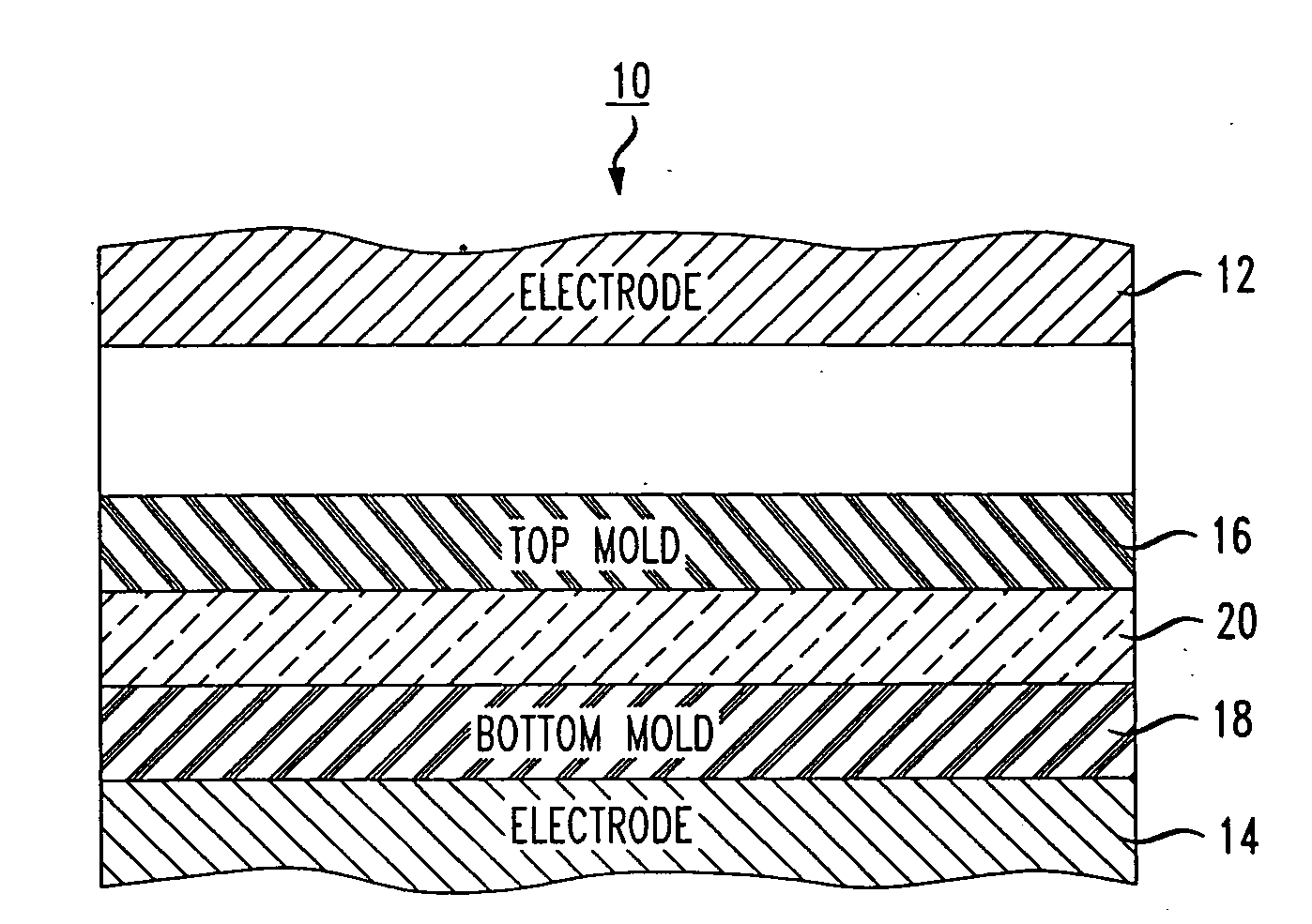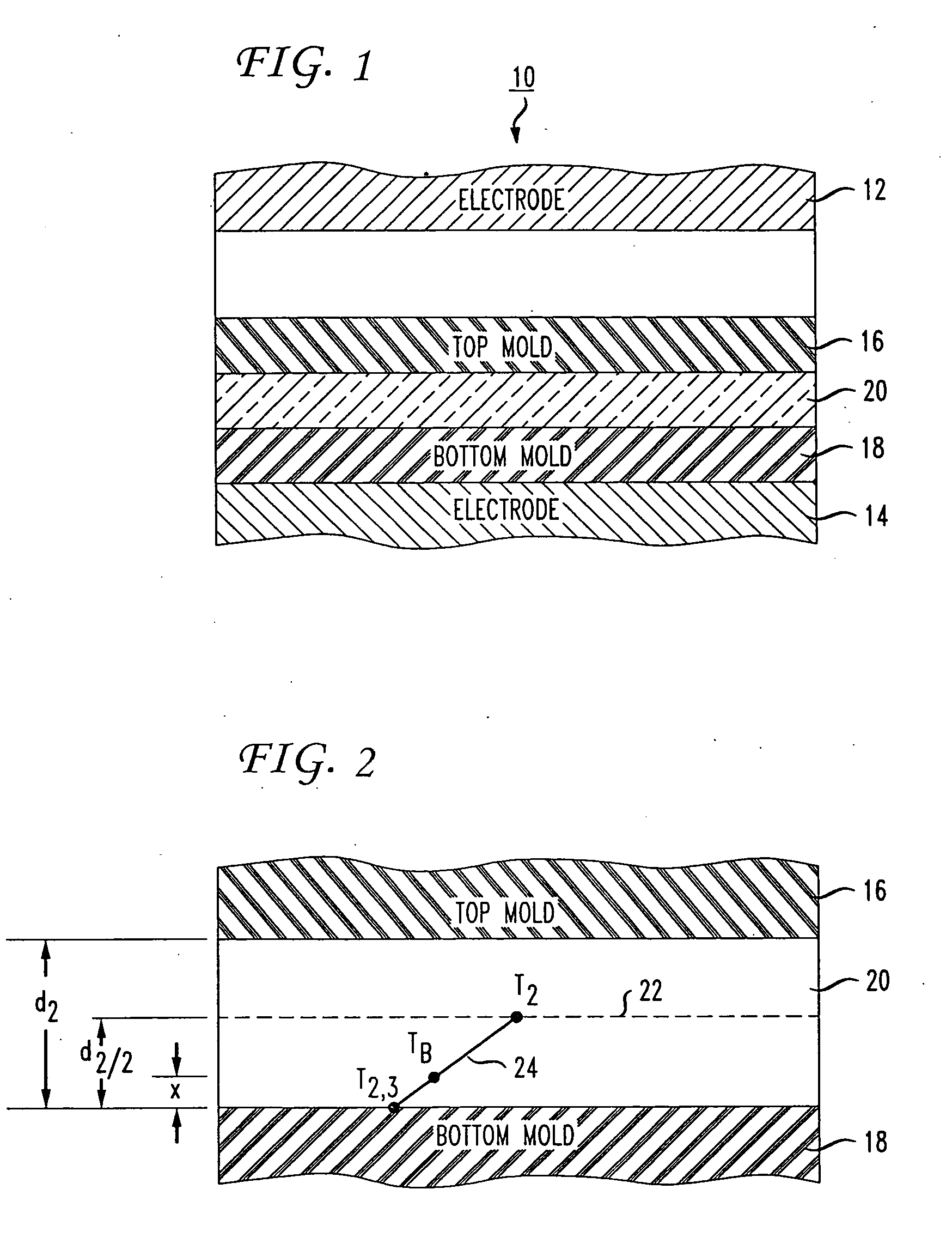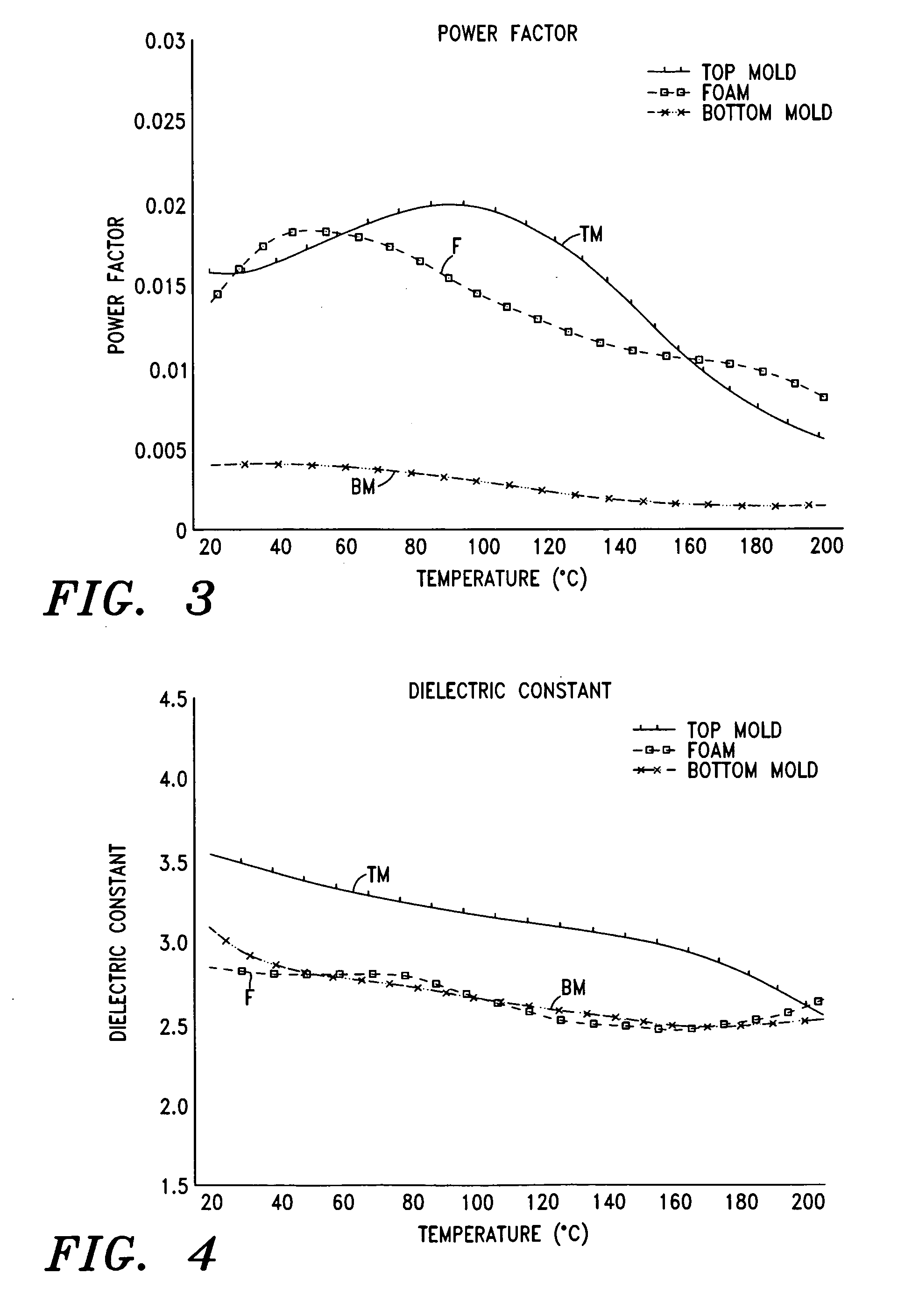Method of Forming a Hardened Skin on a Surface of a Molded Article
a molding method and hardening technology, applied in the field of flow molding, can solve the problems of not being easily washable, not sufficiently durable to withstand abrasion, and many foamed plastic parts made in accordance with these methods
- Summary
- Abstract
- Description
- Claims
- Application Information
AI Technical Summary
Benefits of technology
Problems solved by technology
Method used
Image
Examples
first exemplary embodiment
[0027]Referring to FIG. 1, a first exemplary embodiment of the method of the present invention will now be described with reference to the diagram of a flow molding apparatus designated generally as numeral 10. Flow molding apparatus 10 includes a top electrode 12 and a bottom electrode 14, both of which are connected to an electromagnetic energy source (not shown) operable to generate an alternating electric field between the electrodes. The alternating electric field may be generated at frequencies ranging from 1 MHz to 500 MHz, is preferably generated at frequencies ranging from 10 MHz to 100 MHz, and is most preferably generated at either 26 MHz or 40 MHz. Also included within apparatus 10 are a top mold 16 and a bottom mold 18 that together define a molding cavity therebetween.
[0028]In the illustrated example, a foam material 20 is placed within the molding cavity such that a top surface of foam material 20 is in contact with top mold 16 and a bottom surface of foam material 20...
example 1
[0134]Assume for purposes of this example that top mold 16 and bottom mold 18 of flow molding apparatus 10 are each formed from silicone rubber V-1008 (manufactured by Rhodia Inc.) and foam material 20 comprises an EVA foam blend. Table 1 is provided below to show various factors for each of these layers of material, namely, the desired temperature (T) at the end of the molding cycle, thickness (d), power factor (pf), relative dielectric constant (∈), specific heat (h), and specific gravity (ρ). These factors will be used hereinbelow to perform various calculations in accordance with the method of the present invention.
TABLE 1FoamTop MoldMaterialBottom Mold(layer 1)(layer 2)(layer 3)Desired200200Temperature (T)(degrees Celsius)Thickness (d).125.375.125(inches)Power Factor (pf).0137.0033Relative3.072.672.67DielectricConstant (ε)Specific Heat (h)1.2331.5661.233Specific Gravity1.161.0411.16(ρ)
[0135]As can be seen from Table 1, the desired temperature of foam material 20 at the end of t...
example 2
[0155]Assume for purposes of this example that bottom mold 18 is formed from silicone rubber V-1075 (manufactured by Rhodia Inc.), which contains iron oxide and thus has a higher thermal conductivity than the silicone rubber V-1008 used in Example 1. Specifically, the thermal conductivity of silicone rubber V-1075 is 0.0241. All of the calculations and values of Example 1 remain unchanged, with the exception of the following analysis.
[0156]The temperature at the interface between foam material 20 and bottom mold 18 may be calculated from equation (19) using the temperature (7′3) of bottom mold 18 derived in Example 1 above and the value for the temperature (T2) of foam material 20 shown in Table 1 (assuming that the thermal conductivity of foam material 20 is still 0.00638 while the thermal conductivity of bottom mold 18 is now 0.0241):
T2,3=(.00638×200)+(.0241×55.48).00638+.0241=85.73°C.
[0157]Thus, the temperature at the interface between foam material 20 and bottom mold 18 is now 8...
PUM
| Property | Measurement | Unit |
|---|---|---|
| frequencies | aaaaa | aaaaa |
| frequencies | aaaaa | aaaaa |
| frequencies | aaaaa | aaaaa |
Abstract
Description
Claims
Application Information
 Login to View More
Login to View More - R&D
- Intellectual Property
- Life Sciences
- Materials
- Tech Scout
- Unparalleled Data Quality
- Higher Quality Content
- 60% Fewer Hallucinations
Browse by: Latest US Patents, China's latest patents, Technical Efficacy Thesaurus, Application Domain, Technology Topic, Popular Technical Reports.
© 2025 PatSnap. All rights reserved.Legal|Privacy policy|Modern Slavery Act Transparency Statement|Sitemap|About US| Contact US: help@patsnap.com



